The Curse
Queens Collective, Marrakech. 2018
Three chameleons, wood, car paint, tempera, tiled room
Dimensions variable
Detail
Wood, tempera, live chameleon
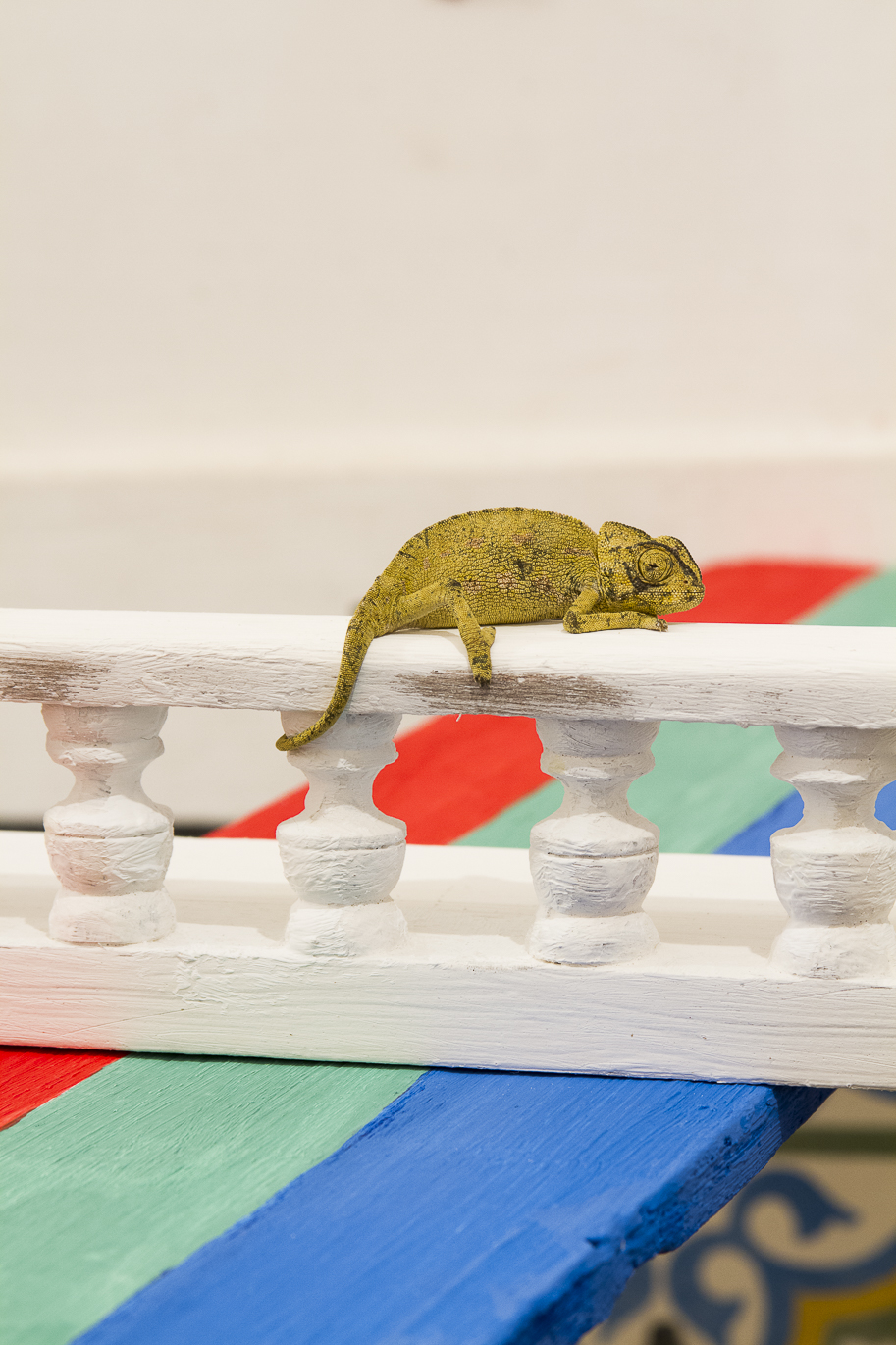
Side room (right) view
Wood, tempera, car paints, live chameleon, tiled room
left: 158 x 110 x 21 cm
right: 154 x 42 x 112 cm
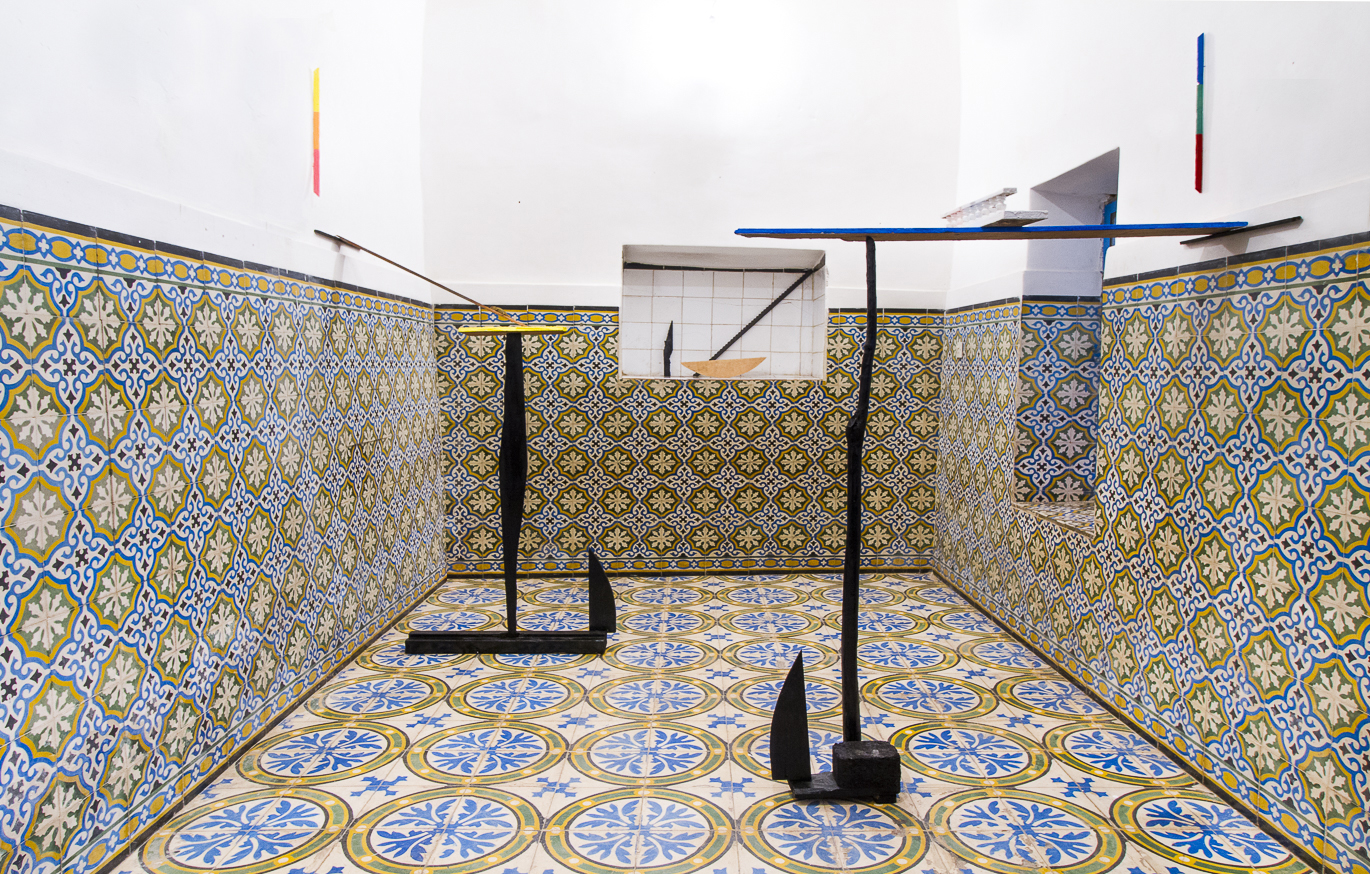
Side room (left) view
Wood, tempera, car paint, live chameleon, tiled room
133 x 87 x 87 cm
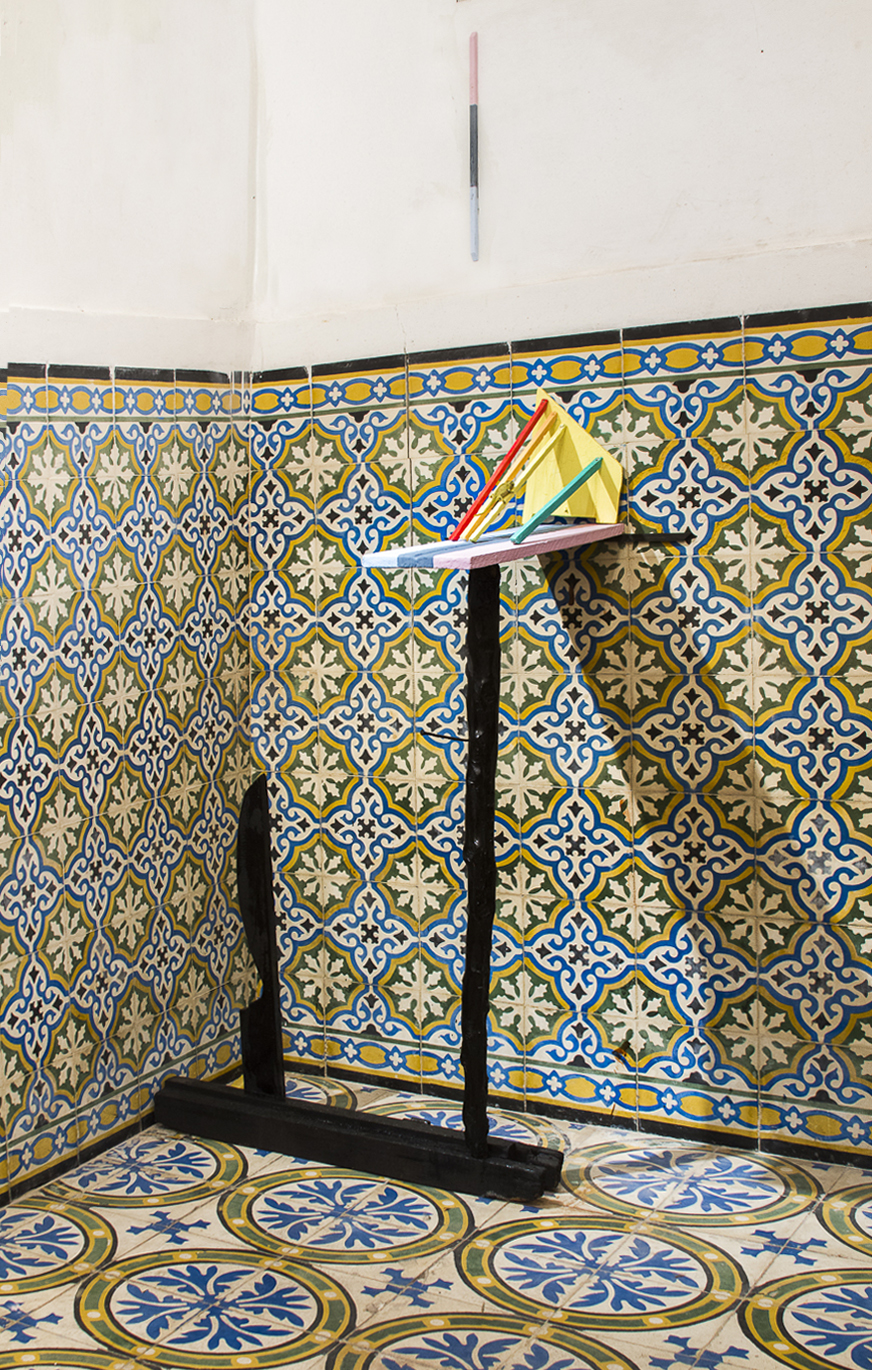
Details
Wood, tempera, Chameleon, tiled room
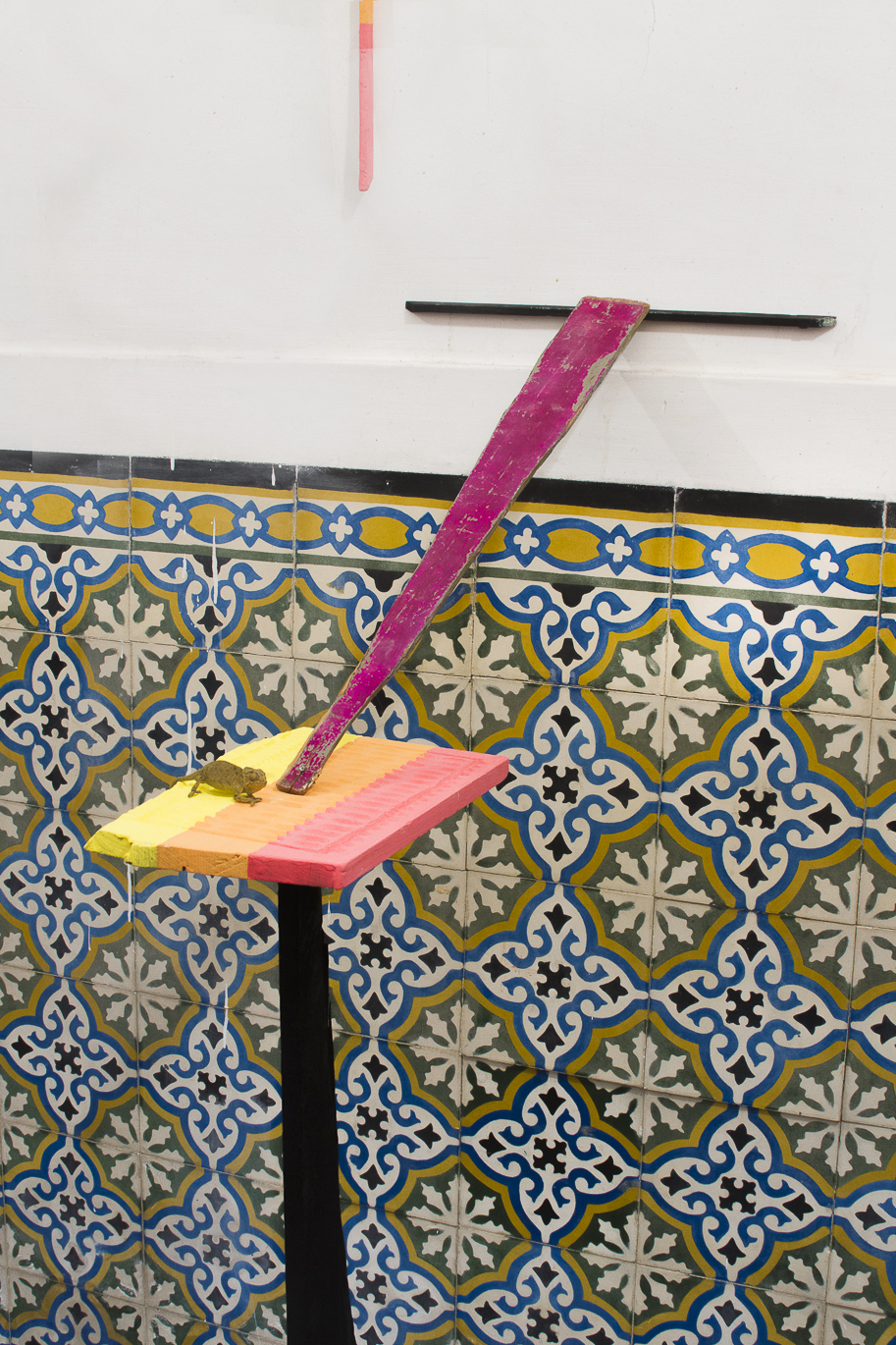
Wood, car paints, tiles
93 x 47 x 68 cm
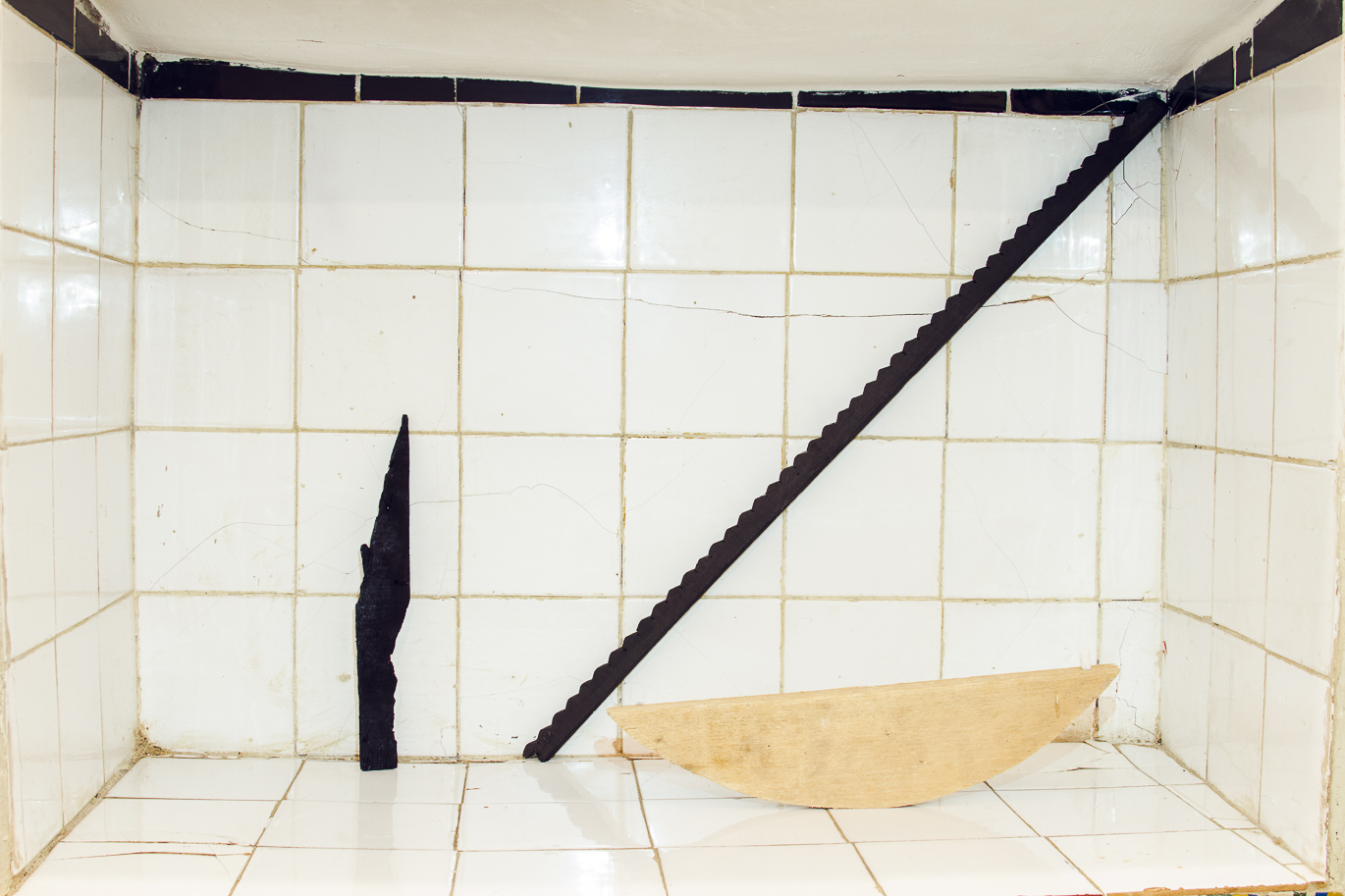 `
`
Detail
Wood, tempera, Chameleon, tiled room
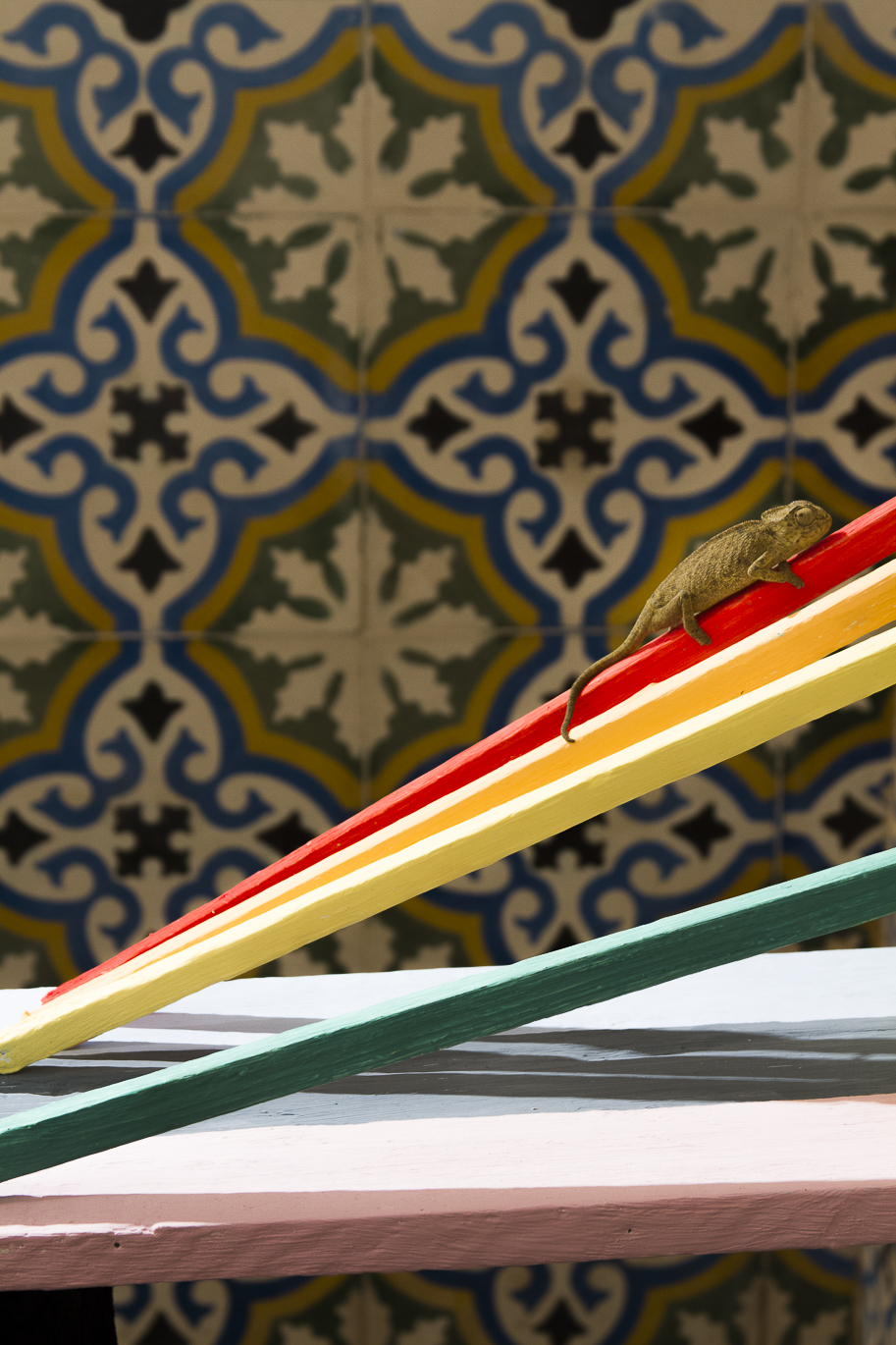
Detail
Wood, car paint, tiled room
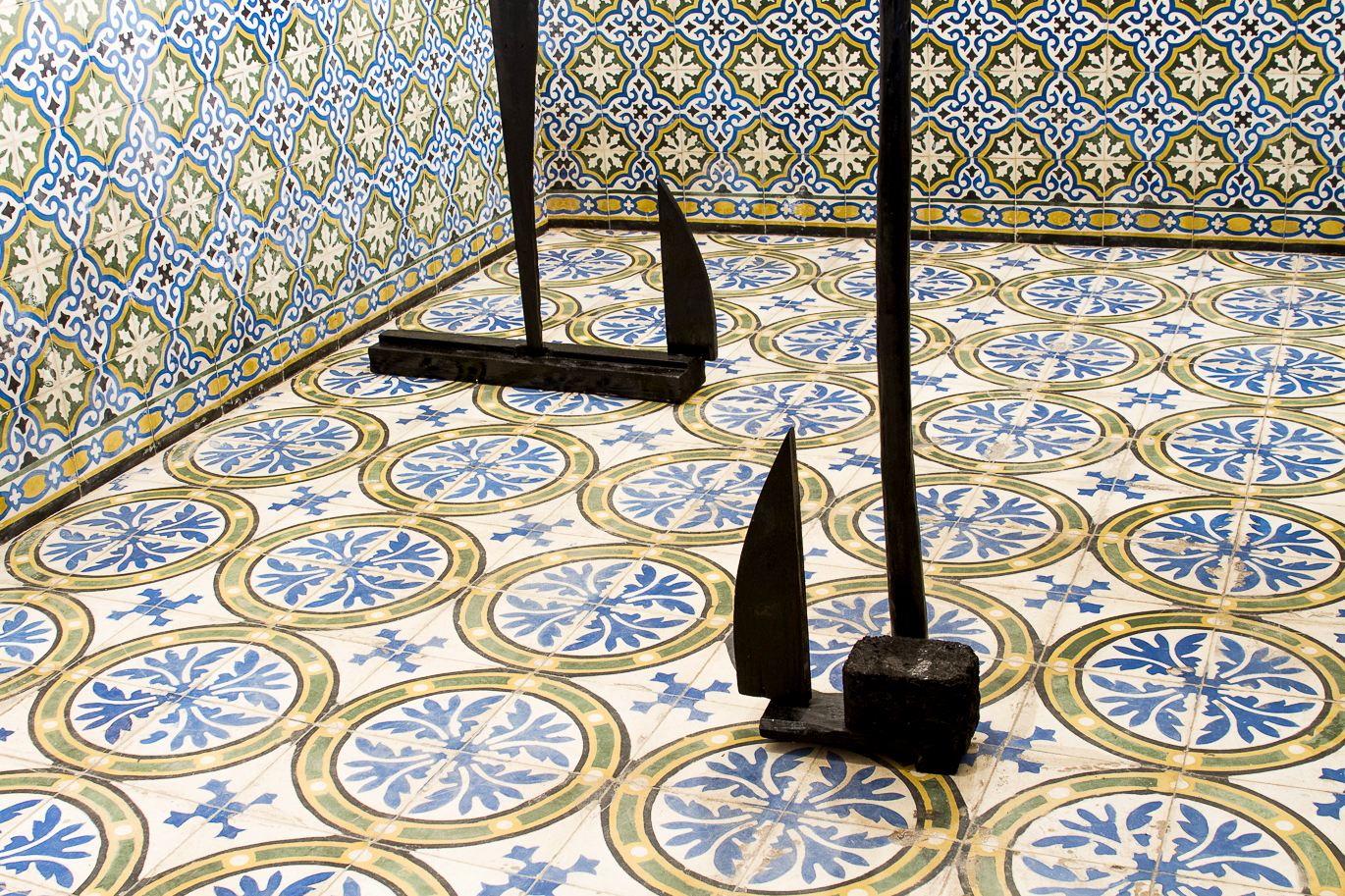
Wood, found coloured plastics for packaging fruits
43 x 1.5 cm
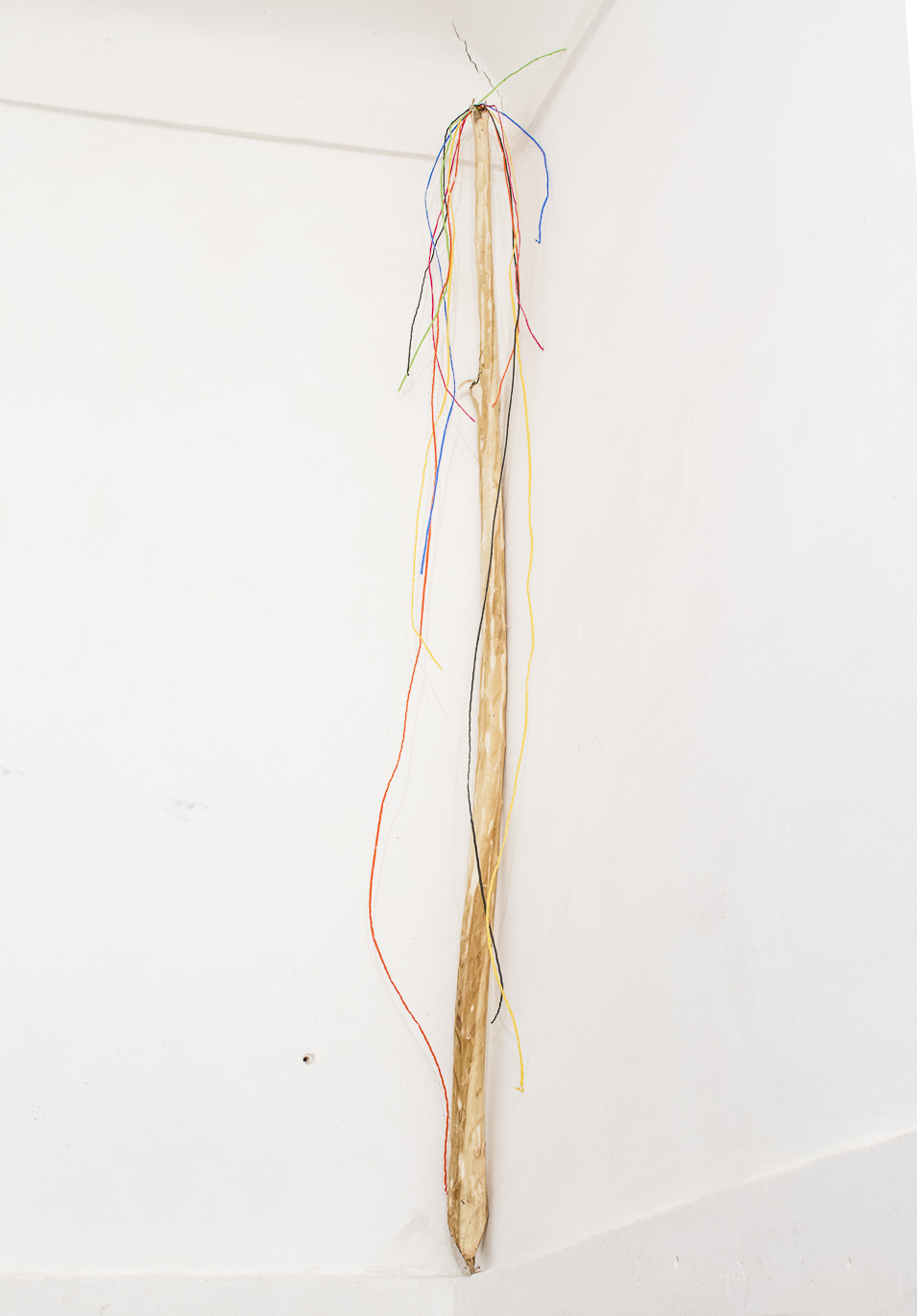
The artist has bought three chameleons from a local street vendor within an old slaves market that became a witch’s market called Laghzal Suq in the Medina of Marrakech. Live chameleons are at times sacrificed within sorcery in Moroccan witchcraft practices: thrown into a fire to create smoke in which Djinns can appear, buried in the foundation of a building for protection against evil eye, dried so that their skin can be mashed and secretly put into the food of a cheating husband for the purpose of not losing him. Perez Evans looks at sorcery as a multiplatform; on the one hand as a necessary place in which some citizens secretly seek help as an alternative to visible traditional support available and on the other, as a place where invisible behavioural policing takes place, where the fear created by supernatural forces present in Djinn culture creates invisible perimeters for ‘correct visible behaviour’. These forces generate consequences on the individuals that exist outside of the expected perimeter, where they become vulnerable and hyper-visible within their social structure.
For the exhibition, an Arabic tiled room has been filled with a series of painted wooden sculptures where the chameleons walk onto. The sculptures made of local throw away materials are covered with multi-coloured stripes of paint, that make chameleons camouflage tactic of colour changing into the place where they are, impossible, turning them visible to us and predators. The audience is invited to walk into the environment and gaze into the now visible animals and structures. The chameleons slowly perform dually in this piece: as power-harnessing creatures used for the purposes of witchcraft and at the same time as very fragile entities through their inability to become invisible within the structures. The impossibility of disappearing in the piece works as an allegory into the complex mechanics present in Moroccan culture, where the tension between what’s allowed to be visible and the things that are made to be an invisible battle.
Notes of animal welfare: The animals have been rescued from a witches market and have been part of the exhibition and then they have been released into a safe place in nature.